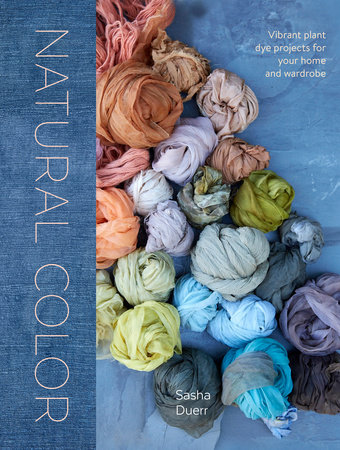Excerpt
Natural Color
WHAT SLOW FOOD CAN SHARE WITH FAST FASHION
Toxic color comes at an enormous environmental and human cost. Many do not realize that although we do not eat our clothing and textiles, the same materials that go into making our garments and disposing of them become us. Residue from synthetic chemicals used to make dyes can be found in our air, water, and soil.
Many of these synthetic chemicals don’t break down well, and the World Bank estimates that 17 to 20 percent of the world’s industrial water pollution comes from textile dyeing and treatment. There are seventy-two toxic chemicals in our water that originate purely from the dyeing process; of these, thirty cannot be removed. As a January 11, 2013,
New York Times piece by Dan Fagin details, our current methods of devouring fast fashion and synthetic dyes have us in “A Cancer Cycle, From Here to China.”.
Manufactured fashion “seasons” move quickly and relentlessly. The term “fast fashion” suggests that an article of clothing may continue to be functional but is no longer perceived to be stylish or appropriate. Unfortunately, everyone, as well as the environment, pays for the bargain bin. As with fast food, there’s little emphasis on the fallout of production or the negative social and environmental effects of rapid consumption.
When you are working with the plant-based color, in contrast, you’re constantly aware that you are working on nature’s schedule, not just your own. With plant dyeing, you can be directly involved with the plant and its life cycle and even the care and quality of the materials used to get a successful result.
Natural color can be sourced from renewable resources—like waste and weeds found in by-products of agriculture and even in urban centers. Many plants discarded from agricultural crops are also dye sources; these include cover crops, like fava bean leaves and stalks, California poppy roots, and gleaned by-products, like artichoke leaves and avocado pits, which make rich natural colors. And many everyday waste products from our urban, suburban, and rural kitchens, restaurants, and grocery stores—such as onion skins, carrot tops, and pomegranate rinds—can also be upcycled from waste bins to make beautiful natural colors and still be composted.
BIODIVERSITY OF COLOR
Plant dyes have a rich history in every culture on the planet. The quest to revive the practice of natural plant dyeing relies heavily on rediscovery and sharing information, as a vast amount of practical knowledge has been lost. Dyeing with plants means more than simply replacing synthetic materials with natural ones—it means changing the way we care for and interact with our natural environment.
Natural color is an immersive and fully sensory experience. Experimenting with fallen redwood cones is awe inspiring, from the color that emerges—deep mauve, purples, and blacks—to the smell of the dye bath, like a walk in a rainy coastal redwood forest. Making your own natural dyes awakens the potential for designing as nature does, with purpose and beauty.
The value of “living” color is to appreciate and treasure the inherent uniqueness of nature and, as with an heirloom fruit or vegetable, to ensure biodiversity for future generations.




